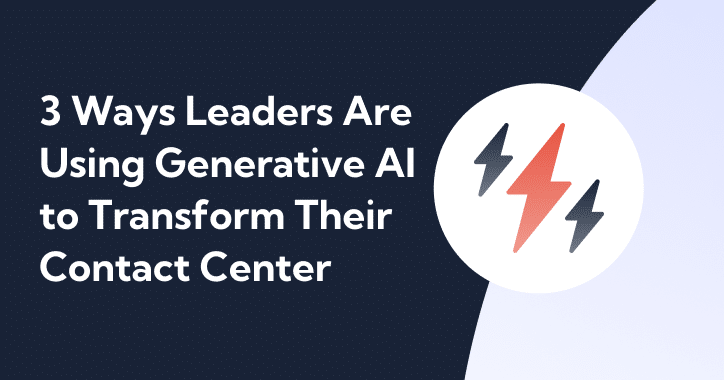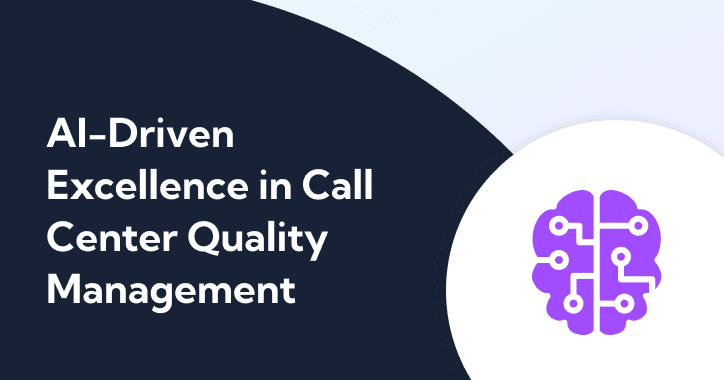
Blair Pleasant
President & Principal Analyst, COMMfusion LLC
The direction of a company is largely determined by the vision of the executive suite. Look no further than the recent Twitter takeover by Elon Musk to see how much — and how quickly — leadership can pivot a company’s trajectory.
Contact centers are no different. Whether executives view their contact center as a profit center or a cost sink ultimately determines how much investment, or divestment, happens there.
Those decisions have a far-reaching impact both in the short term and long term, particularly when it comes to what technologies the center adopts to help handle customer interactions, and how those technologies play a role in determining business success. Case in point: investment, and conversely cost-cutting, has a direct impact on metrics like NPS and CSAT — key predictors of customer loyalty, and ultimately company revenue.
Let’s take a look at how executive viewpoints and perceptions affect these KPIs and how executives are looking to AI technologies to enhance their CX metrics.
“If you build it, they will come”
Balto recently conducted a survey on value perception of the contact center by leaders across industries.
The study revealed an interesting correlation. Execs who view their contact centers as valuable — and invested in staff, technology, and training — reported higher NPS and CSAT scores and better agent retention than those who view their contact center as a drain on resources and planned on cutting costs.
Conversely, the group with cost-cutting measures planned or currently in place experienced the following compared to their counterparts:
- Double the employee churn rate (44.8% versus 21.5%)
- Lower customer NPS by 5 points on average.
- Lower customer CSAT by 9 points on average.
It’s clear that value perception of the contact center is a self-fulfilling prophecy, not unlike Field of Dreams’ “If you build it, they will come.” Those who see their contact center as a profit center, and as a result are willing to make investments in it, reap the rewards of a positive customer experience.
To continue the Field of Dreams metaphor, this begs the question: how many will come? Is the improvement in these metrics really worth the time and resources?
The answer is yes. While there are many ways to boost NPS and CSAT metrics, investing in AI technologies is one way to get the biggest bang for the buck.
Perspectives on investing in AI
I recently authored a report for Five9 based on research done by Zogby Analytics regarding business decision maker perspectives on contact center technologies. I was particularly interested in seeing the impact on buying decisions for technology.
A few interesting observations stand out:
- Three out of four respondents currently use AI in their contact centers. Of the 25% who do not, a third or more plan to do so in the next 12 months.
- The overwhelming majority of respondents said they provide omnichannel experiences, with customer interactions increasingly taking place over non-voice digital channels, and more than two-thirds of the respondents expect digital interactions to exceed 40% by 2024.
- Self-service interactions are on the rise, with 15% of business decision makers expecting 81-100% of interactions to be fully handled via self-service.
What this tells us is that business leaders clearly see value in investing in AI in the contact center, and that digital and self-service interactions are on the rise.
This makes sense, as AI technologies become more sophisticated, they can handle more customer interactions with tools like self-service chatbots. But they also allow agents to handle more complex inquiries — via live chat or voice — by providing essential information in real time.
It’s important to note that with AI technologies on the rise, the initial fear of technology replacing humans has not held up. In fact, according to Salesforce, AI-fueled teams are adding headcount at a faster pace than their peers — 57% of organizations using AI have increased their headcount since 2019.
That’s a good thing too, since 69% of people say talking to a live agent by phone is one of their top three preferred methods of communication with a company’s customer service department.
Benefits of AI on the customer experience
Forty-three percent of those surveyed in the Five9 survey noted that agent interactions have become lengthier and more complex. This is where AI really shines.
With AI, agents can more quickly get the information they need to handle customer inquiries — whether it’s account information, dynamic prompts for product details, or recommended next steps when objections arise.
The report also found that 53% of decision-makers said that agents need to have emotional intelligence and empathy. While AI technologies can’t match humans when it comes to empathy, today’s AI tools can prompt and remind agents to show more empathy when needed. For example, the AI can listen in on conversations or follow text threads and let agents know if they’re talking too much or what phrases will best demonstrate empathy with a disgruntled or upset customer.
These AI tools help agents better handle interactions, reduce call handle time, and improve first contact resolution — all areas that lead to improved NPS and CSAT. It’s no surprise then that 60.3% of contact centers want to implement AI to help with customer satisfaction!
In addition, AI tools enhance self-service options, handling basic inquiries across channels, while providing more options to customers. Instead of calling in and waiting in a queue just to get their bank account balance or routing number, customers can use an app or chat with a bot directly from their phone (ironically), tablet, or computer.
The winning formula for contact center success
The data is clear. Decision makers who see value in their contact centers are investing resources in key tools and technologies, and are providing AI-enhanced omnichannel service options for their customers.
Those who are cutting costs, on the other hand, leave themselves vulnerable to forward-thinking competitors that are deploying AI to improve the customer experience.
Unsurprisingly, acknowledging the important role contact centers play when it comes to the customer experience and loyalty, accompanied by an investment in modern tools and technologies, translates to increased sales, repeat customers, reduced agent training, and a happier workforce.
How do you view the value of your contact center? Perception matters.






